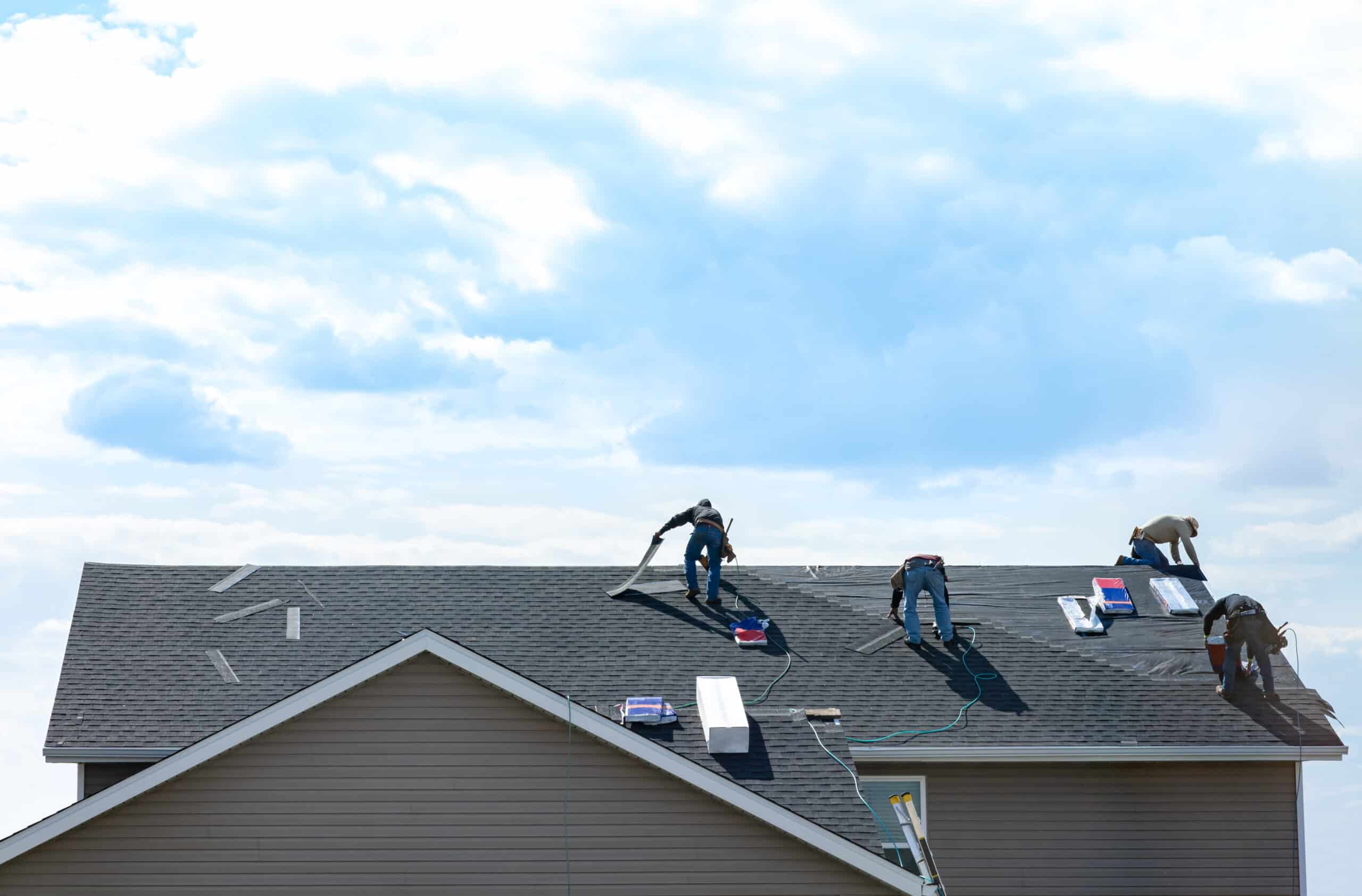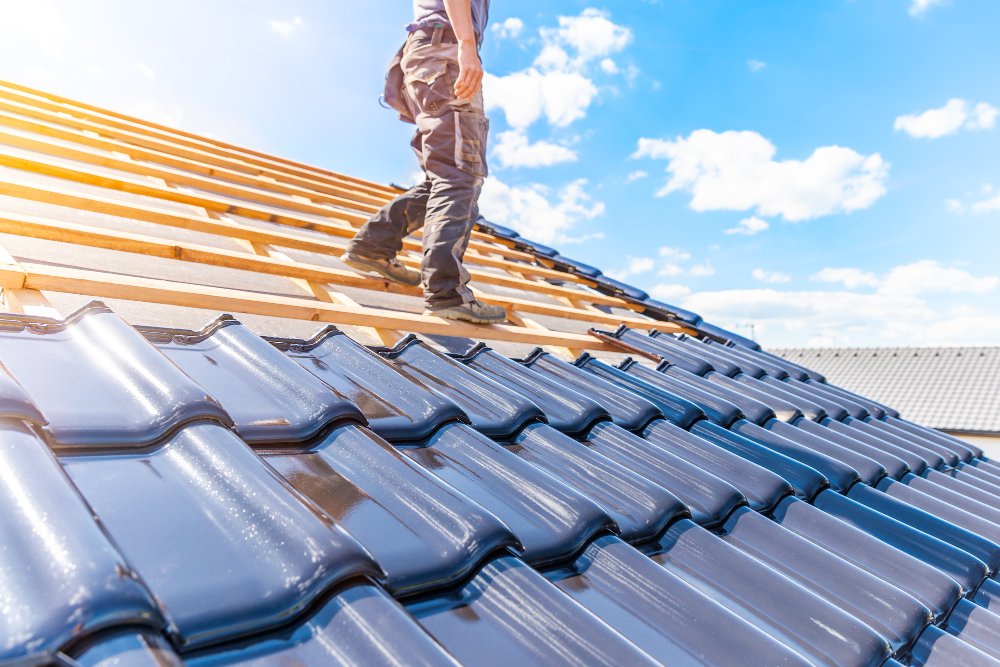A Comprehensive Guide to Effective Roofing Flat Roof Covering Setup
The intricacies of level roof installment demand a thorough technique, beginning with a thorough understanding of different level roofing types and the important materials needed for optimal efficiency. An effective installment hinges not just on the choice of products yet likewise on the preparation and implementation of each step involved in the procedure.
Recognizing Flat Roofing System Types
When thinking about level roofing systems, it is important to comprehend the numerous types readily available, as each deals distinct advantages and negative aspects tailored to particular requirements. One of the most usual sorts of level roof coverings consist of Built-Up Roofing (BUR), Changed Bitumen, and Single-Ply membranes.
Built-Up Roofing consists of several layers of asphalt and gravel, offering exceptional resilience and weather condition resistance. It is especially advantageous in areas susceptible to serious weather condition problems however might require more upkeep due to its complex construction.
Customized Bitumen is a prominent choice for its ease of setup and versatility. It often employs a self-adhesive or torch-applied method, which can be useful for fast fixings and lasting efficiency. Its life-span can be shorter compared to BUR.
Single-Ply membranes, including Thermoplastic Olefin (TPO) and Ethylene Propylene Diene Monomer (EPDM), are recognized for their light-weight nature and power effectiveness. These materials are frequently chosen for commercial buildings as a result of their cost-effectiveness and simplicity of setup (Cleveland Roofing Specialists). They might not supply the same degree of insulation as other alternatives.
Each roof covering type requires mindful factor to consider based upon environment, budget, and details project demands.
Necessary Materials for Apartment Roof
A range of crucial products are important for the effective installment of flat roof. The option of products directly influences longevity, performance, and total efficiency.
One of the key materials is the roof membrane layer, which can be constructed from various compounds such as polycarbonate polyolefin (TPO), ethylene propylene diene monomer (EPDM), or PVC. Each type supplies distinct advantages, including UV resistance and adaptability, which are crucial for prolonged performance.
In enhancement to the membrane layer, insulation materials play a substantial function in power performance. Rigid foam boards or polyisocyanurate insulation are prominent choices, as they supply excellent thermal resistance and wetness monitoring.
Moreover, roofing adhesives and sealers are important for ensuring a water tight installation. These items must work with the selected membrane to avoid wear and tear gradually.
Planning For Setup
Correct prep work is important for a successful flat roof covering setup, as it prepares for a reliable and long lasting roof. Begin by carrying out a comprehensive evaluation of the existing roof covering structure. Look for signs of damage, consisting of leakages, rot, or insufficient drain, which might jeopardize the new roof. Guarantee that the hidden products are sound and can support the weight of the new roofing components.
Following, gather all required devices and materials, guaranteeing that they fulfill industry criteria. This includes water resistant membranes, insulation, flashing, and bolts. Recommended Reading Familiarize yourself with the maker's requirements, as adherence to these standards is crucial for warranty purposes.
Furthermore, make certain that the job location is free from debris and blockages to assist in risk-free and effective setup. Think about climate condition; prevent installment throughout hefty rain or severe temperatures, which can influence product efficiency. Educate any type of occupants of the building about the forthcoming work to make sure safety and decrease disruptions. By taking these primary actions, you can improve the likelihood of an effective flat roof covering installation that fulfills both structural and visual needs.
Step-by-Step Installment Process
With the foundation established through complete preparation, the following stage entails carrying out the flat roofing setup systematically. This step is vital for preserving the roofing system's integrity over time.
Complying with the vapor obstacle installment, put down insulation boards, ensuring they fit snugly with each other to minimize thermal linking. Safeguard the insulation with proper fasteners based on the roofing kind and local building codes. As soon as the insulation remains in area, it's time to apply the roofing membrane layer. Depending upon the selected material-- such as TPO, EPDM, or changed asphalts-- install the membrane layer according to the supplier's specifications.
Ensure correct overlap at seams and sides to develop a watertight seal. Use adhesives, mechanical fasteners, or warm welding as required. Set up blinking around perimeters, vents, and any roofing penetrations to improve waterproofing. After installment, conduct a comprehensive evaluation to recognize any prospective issues prior to concluding the task, making certain a reliable and durable level roof system.
Maintenance Tips for Longevity
Routine maintenance is important official site to make certain the longevity and performance of a flat roofing system. One of the main tasks is to conduct regular inspections at least twice a year, preferably in spring and autumn. During these evaluations, seek signs of wear, such as sores, splits, or merging water, which can suggest underlying concerns.

Guaranteeing correct drain is important to avoid water build-up. Examine and clear gutters, downspouts, and scuppers to assure unobstructed water flow. In addition, examine seals around vents, skylights, and various other penetrations for any type of indications of wear and tear, applying caulk or sealer as required to maintain a water tight barrier.
Finally, take into consideration specialist upkeep services every couple of years for comprehensive maintenances. By sticking to these maintenance ideas, you can dramatically extend the life of your flat roof, ensuring it continues to be a reputable shield against the aspects.
Final Thought
Reliable flat roof setup necessitates an organized technique encompassing complete examinations, material option, and precise prep work. Adhering to the detailed steps during the installment process makes certain the appropriate application of roof covering membranes and insulation while improving waterproofing via efficient blinking installment.
The intricacies of level roof setup need a meticulous technique, starting with an extensive understanding of numerous flat roofing system kinds and the necessary products required for ideal efficiency.Correct prep work is vital for an effective level roof setup, as it lays the groundwork for a effective and resilient roof covering system. After installation, perform a comprehensive evaluation to identify any possible concerns before ending the project, making certain a durable and reliable flat roofing system.
